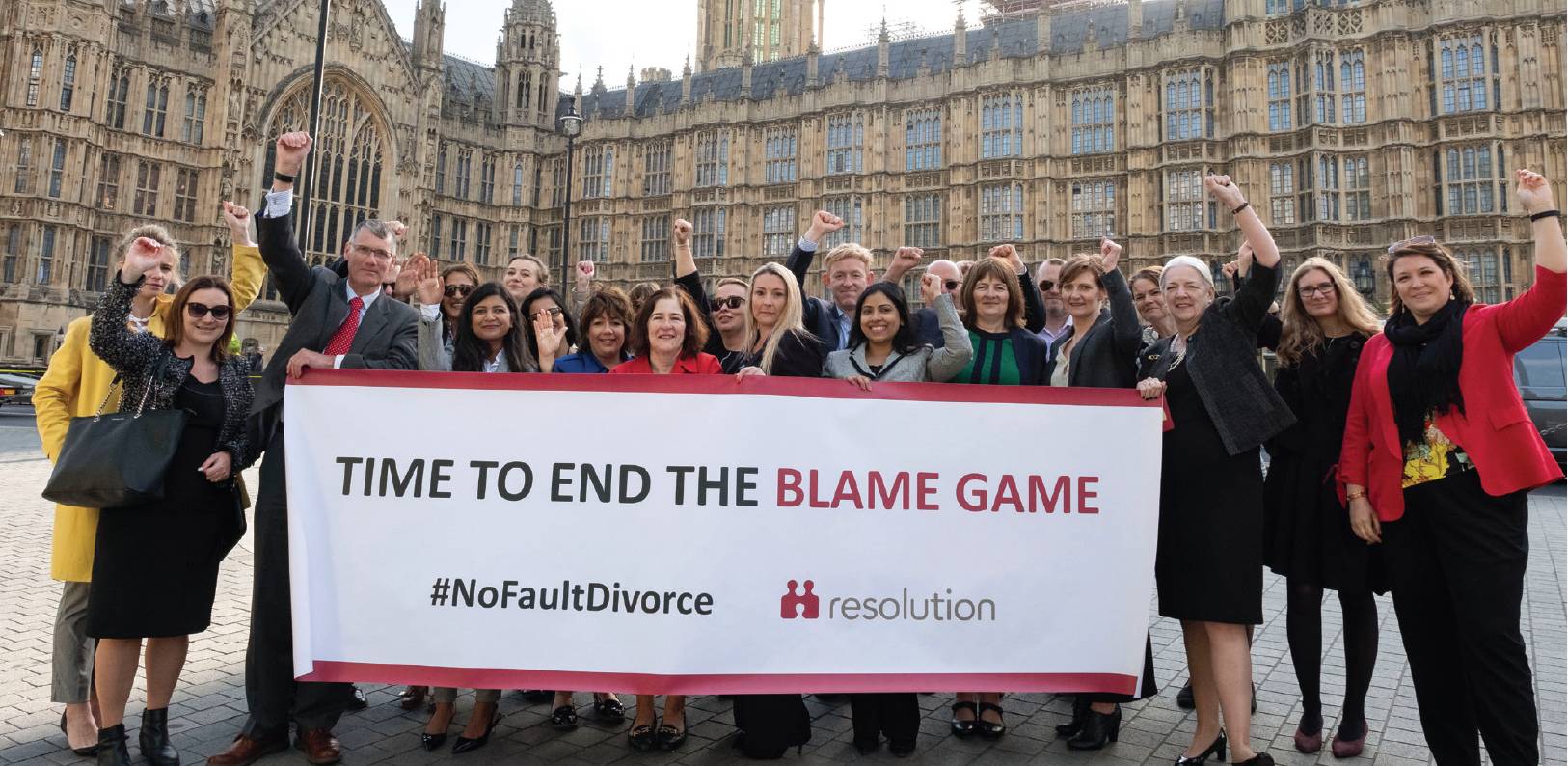Family law
Campaigning for ‘divorce without blame’
Resolution urges family law practitioners - and the sector - to join forces to call for no-fault divorce.

About the author
Margaret Heathcote is national chair of Resolution.
On 17 May, the Supreme Court heard Owens v Owens and Resolution (intervener) UKSC 2017/0077, the court’s most high-pro file divorce suit yet.
In the Central Family Court, and later in the Court of Appeal ([2017] EWCA Civ 182), Mrs Owens's petition for divorce was not granted on the basis that the husband’s behaviour was not deemed unreasonable enough, leaving her ‘trapped in an unhappy marriage’ (Court of Appeal judgment, para 100). If Mrs Owens had not been granted a hearing at the Supreme Court, her only other recourse would have been (in due course) to petition again, but this time rely on the fact that she had been continuously separated from her husband for five years.
As the only third party given permission to intervene in the appeal, Resolution’s legal argument, in support of Mrs Owens, focused on the interpretation of section 1(2)( b) of the Matrimonial Causes Act 1973. If the Supreme Court agrees with Resolution’s interpretation, this would mean a fundamental change in the way ‘behaviour’ petitions are drafted and dealt with.
As national attention focused firmly on the case, Resolution seized the moment to demonstrate support outside parliament for the introduction of no-fault divorce.
With the help of a number of partners, including CILEx, Resolution’s digital campaign on the importance of divorce law reform reached over 200,000 accounts. Resolution members wrote to their MPs, progressing the issue directly with their representatives. The media also ran with the story, featuring commentary on the case, alongside the urgent need to implement no-fault divorce, on the BBC Two news show ‘Victoria Derbyshire’ and Sky News, with articles in the Times and the Guardian and on BBC News online.
Owens will have far-reaching implications for the family justice system. At the same time, there has been concerted pressure, in recent years, for the government to implement a no-fault divorce option. Reform is strongly supported by the family law sector, and a growing number of experts, including Supreme Court President Baroness Hale, Supreme Court Justice Lord Wilson, Sir James Munby, former President of the Family Division, and even Sir Paul Coleridge, chair of the Marriage Foundation.
A survey of Resolution members was released to coincide with the no-fault campaign. Of those family law professionals who responded:
- 90% said that the current law makes it harder for them to reduce conflict and confrontation between clients and their ex partners.
- 80% said that the introduction of no-fault divorce would make it more likely that separated couples would reach an agreement out of court.
- 67% said that current law makes it harder for separated parents to reach an amicable agreement over arrangements for children
- Compared with proceedings before the Court of Appeal judgment, 60% have also noticed lawyers drafting more aggressive petitions.
Resolution’s members are united in their commitment to its Code of Practice, which focuses on a constructive and non-confrontational approach to resolving family issues that puts the needs of children first: encouraging a process centred on blame is directly opposed to this.¹
Resolution proposes a new divorce procedure where one or both partners can give notice that the marriage has broken down irretrievably. The divorce can then proceed and, after a period of six months, if either or both partners still think that they are making the right decision, the divorce is finalised. Divorce without blame was provided for in the Family Law Act 1996, but never enacted. The government’s Family Mediation Taskforce recently recommended that divorce without blame be introduced.²
Divorce without blame will increase the chances of success for non-court dispute resolution processes as it immediately puts both partners on a level footing. This will reduce the burden on the family court, and help the government to meet its aim for more people to resolve their problems outside of the courts.

Chartered Legal Executives have long been aligned with Resolution and its work. Recently, Juliet Harvey became the first CILEx member to serve as vice chair of Resolution and will become chair in 2020. See also page 48 of this issue.
Resolution is incredibly thankful to CILEx, and its members, for supporting our no-fault divorce campaign; however, there is of course more work to be done. There are a number of resources available to support campaigning on this issue, including template letters to your MP and resources to share on social media.³ We look forward to working with you to drive the importance of this home to the government.
Our campaigning follows Resolution’s recent partnership with CILEx to launch a free resource on the future of family justice for Chartered Legal Executives. The report focuses on key trends and the ways in which practitioners can successfully navigate the evolving family justice landscape.4
At the time of writing, judgment in the Owens case is imminent (see page 42 of this issue). Whatever the result, you can be sure that Resolution will continue to keep no-fault divorce in the forefront of the minds of those looking at family justice issues. Until then, it is important that we keep up the pressure and continue to raise awareness of the harmful and unnecessary impacts of a divorce system founded on fault.
People should not have to go through the charade of apportioning blame to one party, in order to bring their relationship to a dignified conclusion and move on with their lives. A civilised society deserves a civilised divorce process.
- Available at: www.resolution.org.uk/Code
- Report of the Family Mediation Task Force, June 2014, available at: www.justice.gov.uk/downloads/family-mediation-task-force-report.pdf
- Available at: www.resolution.org.uk/EndTheBlameGame
- Family Law & Justice: the current landscape and direction of travel. A guide for family law practitioners, available at: www.resolution.org.uk/cilex/